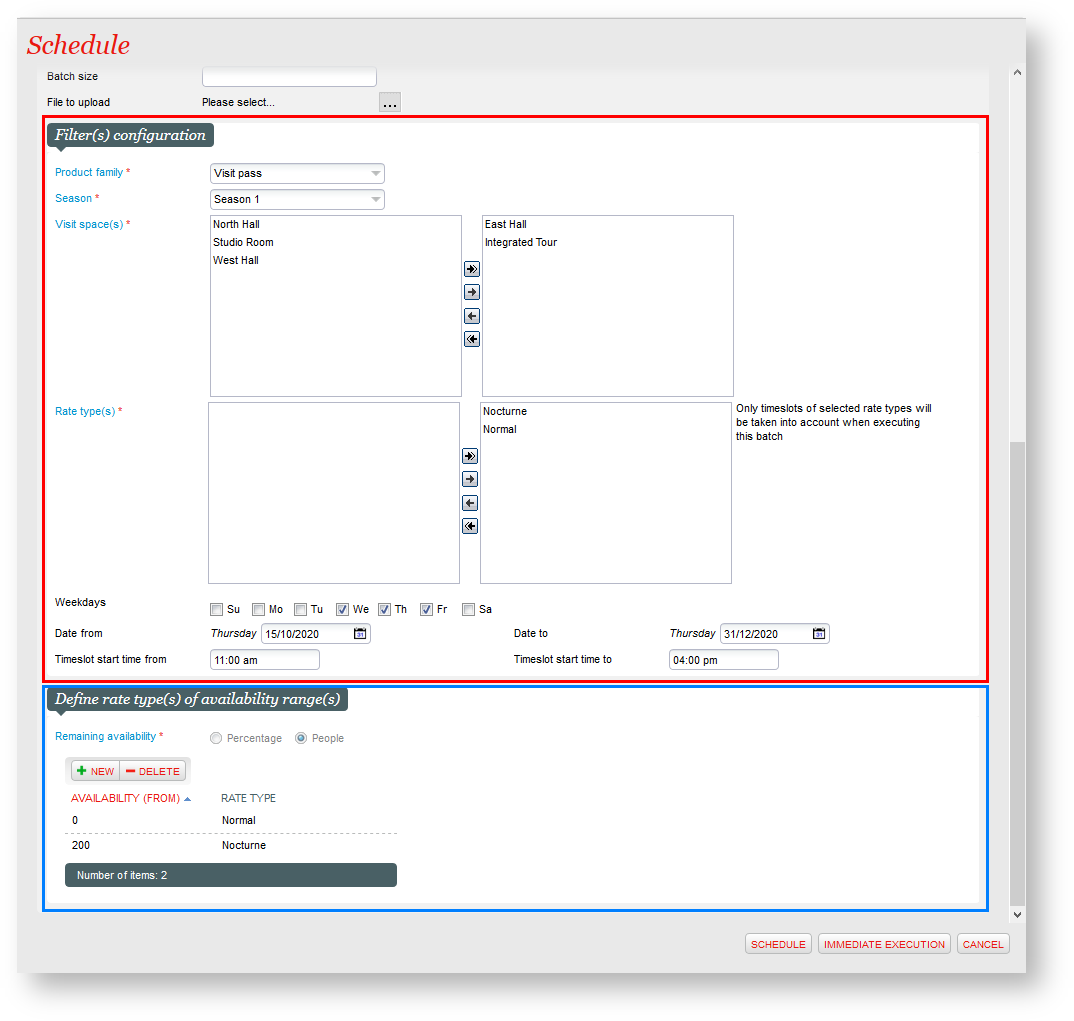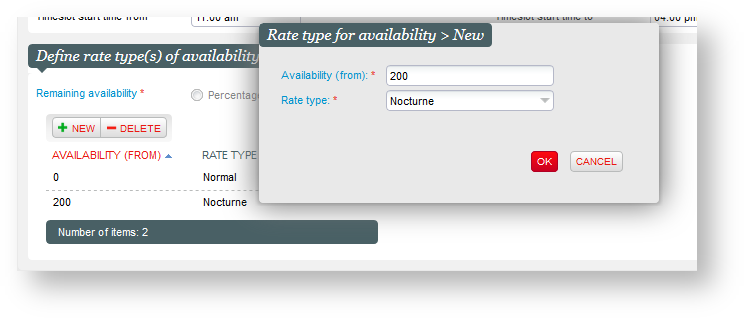| Excerpt | ||||||||
|---|---|---|---|---|---|---|---|---|
|
We are introducing a dynamic pricing batch in order to be able to set which rate type needs to be applied depending on the level of quota that remains on selected timeslots (percentage or fixed value). This new batch will let you setup a dynamic pricing strategy based on the remaining availability
to optimize the revenue generated by your institution and reduce the congestion on highly
Before starting with the content:
- Title should be concise, in the same style as the other title. Keep in mind that we are showing both the title and the excerpt below on the release note page - so no need to be too long. Always create the page first in the "Work in progress (not public)" page, "Sprint x -" prefix and inside one of the "component (WIP)" page. If you feel a component is missing, ask GTH.
- Put labels on the page, especially the ones used in the "Guide" section. This will make your release note show up in the Guide section of the website.
- Delete this instructions of course
Context
| Excerpt | ||||||||||||||||
|---|---|---|---|---|---|---|---|---|---|---|---|---|---|---|---|---|
Status should be
|
Solution
RECOMMENDED - Description in more details about what the feature is. Keep it more operator-oriented, not overly "marketing".
| Warning | ||
|---|---|---|
| ||
Communicate also in this section important limitations or information that the customer should not miss. |
| Info | ||
|---|---|---|
| ||
Use info box if you want to highlight a particular point. |
Getting started
MANDATORY - What is the setup required to use the feature (even if none, please mention)? Where can I see the feature? (this is intended to be a short guide). At least one screenshot should be provided, at latest for the finalized release note at sprint end.
Examples
demanded timeslots. The new batch works for timeslot based product families. So you will be able to define an automatic rate change for visit passes and timeslot passes.
Changing the rate type automatically update all the prices of your products on the sales channels where the products-timeslots can be sold.
| HTML | ||||||
|---|---|---|---|---|---|---|
| ||||||
<iframe width="640" height="360" src="https://www.youtube.com/embed/kO07A3Q6V5I" title="YouTube video player" frameborder="0" allow="accelerometer; autoplay; clipboard-write; encrypted-media; gyroscope; picture-in-picture" allowfullscreen></iframe> |
Getting started
- Create all the rate types you want to be able to apply to your timeslots.
- In the product configuration, you need to pre-define all the prices that corresponds to the rate type regarding this products.
- On the timeslots, you can select the rate that will be used to defined the price of the product-timeslot combination the visitor will purchase.
- Create a "dynamic prices for timeslots" batch
- Select the range timeslots on which the batch should apply the rules you will setup next.
- Set the dynamic pricing rules you want to apply. The rules will define which rate type will be applied depending on the quota still available.
- The batch will now run and automatically change the rate type applied on the range of timeslots you have selected in step 3. above.
- As the rate type is changing, the price presented to the customer are too.
Dynamic pricing for timeslots setup screen
Setting the limit when a rate type needs to be changed
- You can add as many rules as you want. Make sure you set prices on the product for the corresponding rate type.
- The rate type availability range can be set as a percentage or as fixed value.
- A dynamic pricing batch can be set for one or more visit spaces but a given visit space cannot have several batches running. However, you can have as many schedules as you want for a batch.
- e.g : Within the same batch you can define a first schedule with a set of dynamic pricing rules on all the weeks timeslots and a second schedule for all the weekend timeslots dynamic pricing rules that can be different.
- You can choose the frequency of your schedule with a maximum frequency set to every minutes.
Side notes
Scheduling different batches
Within one batch you can create as many schedules as you want, we recommend to avoid setting more than one dynamic pricing strategy on a the same timeslots range. The system supports it, but it will difficult to foresee what will be happening if several strategies are crossing over the same range of timeslots.
Product families
The following product families are supported:
- Visit passes
- Timeslot passes
What happens when a visitor has purchased for price A, and 2 weeks later he wants to change the timeslot (knowing that the price has changed in the meantime)?
- If the price of the desired timeslot is higher than the original price paid then the visitor will have to pay the difference, regardless the sales channel used.
- At the box-office : if the price of the desired timeslot is lower than the original price paid then the visitor will have some money back if the exchange is done on box-office.
- Online with the self-exchange feature : if the price of the desired timeslot is lower than the original price paid there will be no refund. The rules of the self-exchange feature are applied
- .

